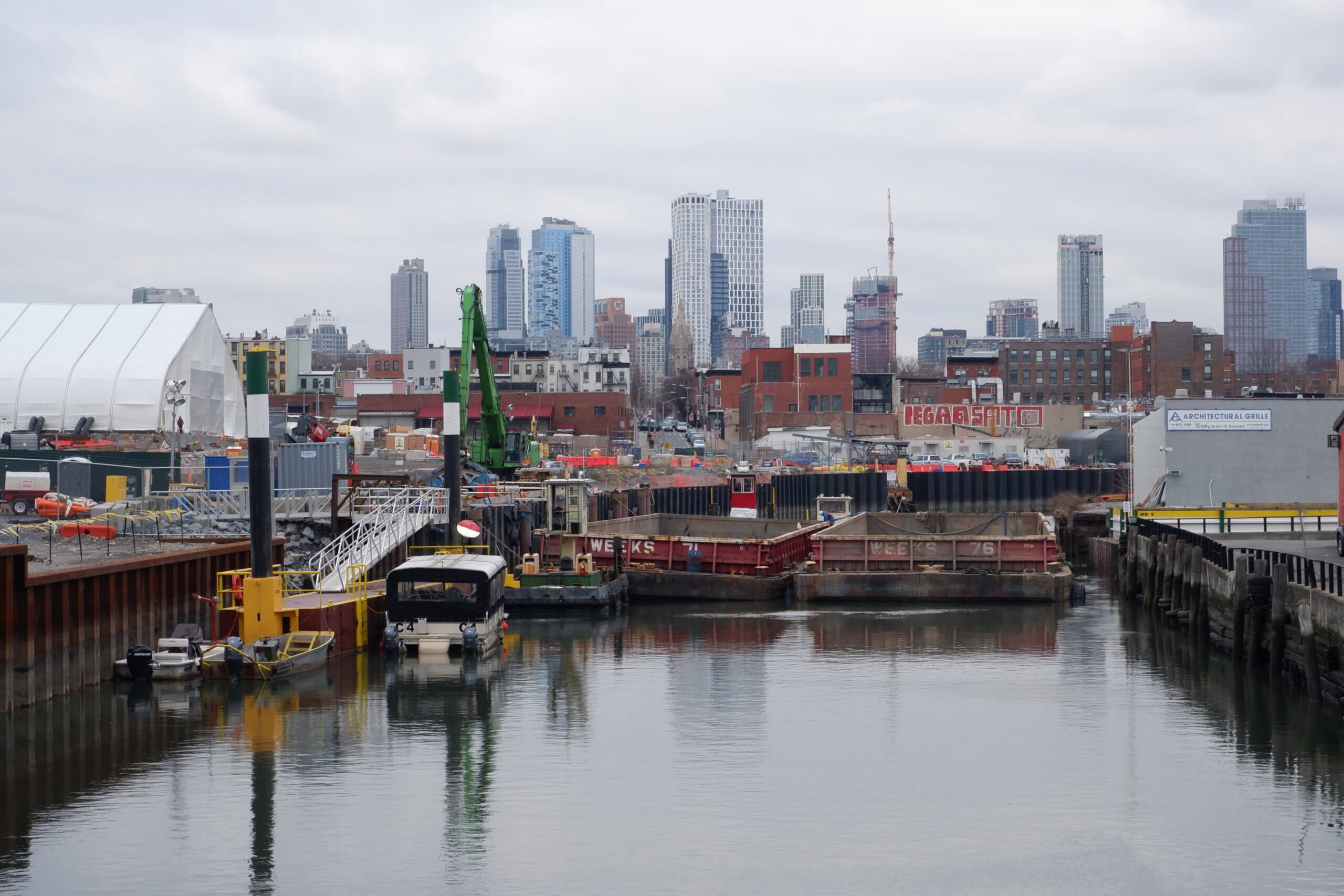Gowanus Canal canoers pleaded with a local developer to include waterfront access along with their proposed six-story development at 300 Huntington St., saying the road’s dead end has provided daredevil boaters an easy launch point into the fetid waterway for more than two decades.
“Twenty-two years ago, we started canoeing the filthy Gowanus Canal, and Huntington Street was known for prostitution, mongrel dogs, and a spot to purchase drugs,” said Owen Foote, the founder of the Gowanus Dredgers Canoe Club at a recent virtual public meeting on the project. “Please don’t take our waterfront access away.”
Monadnock, an area housing contractor and developer, is seeking a rezoning to build their new headquarters near Smith Street, moving their operations a couple of blocks south from their current digs along the canal at Third Street.
They applied with the city for a zoning change allowing them to forego a 240 parking spot requirement in the building, citing their close proximity to the Smith-9th Streets subway station and the walkability of the surrounding area as evidence that the parking minimum is unnecessary.
The proposal would include a new public walkway fronting the building, and renderings show boaters paddling in front of the development.

Reps pitched the pathway as reconnecting Gowanusaurs with Brooklyn’s Nautical Purgatory, but at a Wednesday hearing with the City Planning Commission, the paddlers called on Monadnock to revamp a proposed steel bulkhead along the water’s edge and instead provide an open shoreline.
“I think the public should have canal access and I think, in what I saw, it seems that that’s a very easy possibility,” said resident Sandye Renz at the March 3 virtual hearing. “They want to feel connected to the canal, what better way to be connected to the canal than to actually have access to the canal.”
A landscape architect for Monadnock told CPC that the site’s almost 300-foot shore was simply too small to accommodate a berth, adding that there were many locations along the canal that would be better suited for docking, such as the waterfront esplanades planned under the city’s Gowanus Rezoning, which includes areas just north of the proposed project.
“We know that boat access is very important to the greater community, however, this site is quite limited in terms of its overall width and there are many other sites that are being planned as part of the greater rezoning that are more amenable to boat access,” said Gena Wirth.
Monadnock is willing to install a ladder hanging from the bulkhead as an emergency exit, according to the designer, but an experienced boater from Manhattan chimed in to say that wouldn’t cut it.
“Honestly in a city of 8 million people, that doesn’t scale,” said Graeme Birchall, who runs the free kayaking service Downtown Boathouse on the distant isle. “You have to have multiple access points from the water or you’re basically creating a safety issue.”
Other watercraft aficionados said the developers were cutting off the only access point on the southern portion of the canal, closer to more working-class neighborhoods like Red Hook and Sunset Park, as opposed to the next nearest entry point at Second Street and the rezoning area, which will be closer to tonier Carroll Gardens and Park Slope.
“We’re dealing with a limited resource: waterfront access at a public street end serving a different part of the community and really different communities than any other launch site along the canal today,” said Dredgers Captain Brad Vogel. “With every passing day, there are more segments of the canal bulkheads that are now sheer steel bulkheads instead of the collapsed wooden, or stone, or debris-based bulkheads that made up the bulk of the canal landscape and shoreline for many decades.”
The spot currently serves as a staging area for the federally managed Superfund Cleanup, and one local educator said it could become a haven for area students to learn about the city’s waters, especially pupils at a maritime middle school the city has been in talks of building in Red Hook.
“The opportunity to access water would be one of the most important things that we can do for our students,” said Priscilla Figueroa, who currently heads up Red Hook Neighborhood School and would lead the new education facility. “We want our students — all students, all races, all colors, all families — to have access to water and understand the importance of the needs of their community and advocate.”

Commissioners with the CPC said the developer will have to address these requests before the 12-member panel gives its vote, which is binding for the project to get approval under the city’s lengthy Uniform Review Land Use Procedure.
“I believe I speak for most of us when I say the applicant is going to need to address many of these issues that have been raised by the speakers seeking waterfront access,” said Commissioner Allen Cappelli. “I know that I’ll be looking very carefully to see how this matter is addressed before we reach a resolution on this.”
The proposal previously got the unanimous advisory approvals of both local Community Board 6 and Borough President Eric Adams, with CB6 recommending in December the developers come up with a “more creative public amenity along the promenade.”
The project will come back before CPC at a future hearing and if approved, heads to the City Council for its final vote.
Correction (1:30 pm): A previous version of this article misspelled Sandye Renz’ name. Brooklyn Paper regrets the error.























